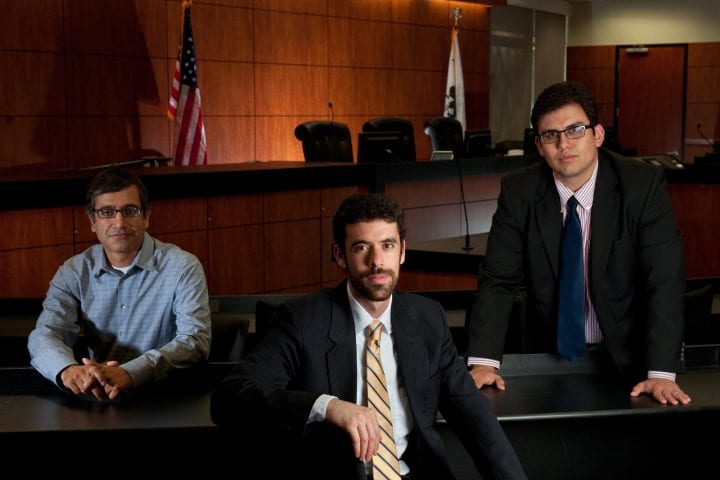Exploring the human toll of a misguided policy
Immigration Rights Clinic students say Secure Communities program could lead to racial profiling.

The Immigrant Rights Clinic is one of seven legal clinics established this fall at UC Irvine’s School of Law to provide students with the practical training they need to become lawyers. The school is one of only a few in the country that requires clinic experience to graduate.
Working with the new Immigrant Rights Clinic, third-year students Edgar Aguilasocho and David Rodwin conducted a study of a program called Secure Communities, in which Los Angeles and other local law enforcement authorities pass on information about arrestees to Immigration & Customs Enforcement, part of the U.S. Department of Homeland Security that has the authority to deport undocumented aliens.
The Secure Communities program was introduced by the Bush administration in 2008 to remove “criminal aliens” and was expanded to at least 44 states and territories under the Obama administration. It’s expected to be implemented nationally next year, though some jurisdictions have opted out.
The UCI students, under the supervision of the clinic’s director, Professor Sameer Ashar, reviewed published reports and data about the program and interviewed Los Angeles residents held in immigration detention after being transferred to ICE by Los Angeles County law enforcement.
Some interviewees were themselves crime victims or had been mistaken for criminals, some were guilty of minor crimes or traffic offenses, and some had committed crimes but posed no threat to their communities.
In a Jan. 25 opinion piece about the study for the Los Angeles Daily Journal, a statewide legal affairs newspaper, Aguilasocho and Rodwin wrote: “This kind of policing, with dire consequences even for Los Angeles residents who have no involvement in criminal activity, is unfair, arbitrary, and can lead to racial profiling.”
The students sent the study to the Los Angeles City Council and the Los Angeles County Board of Supervisors, and it was highlighted in a major immigration rights bulletin.
“What made the experience particularly meaningful for me was the opportunity to connect interviews with individual immigration detainees to a larger movement against a really harmful immigration program,” Rodwin says.
“Writing this white paper gave me the opportunity to put faces to a program I had really only read about,” Aguilasocho says. “It allowed me to explore the human cost of a large-scale regulatory program.”
The project let these students see how immigration policy affects people’s lives, Ashar notes, adding: “It also demonstrates how a university-based law clinic can operate at the intersection of advocacy and academic analysis.”
Among the detainees interviewed were “TS,” who had been wrongly arrested after police chased a man with a gun through his house; “GB,” who had run a red light and didn’t have a driver’s license; and “JP,” who had been convicted of drunk driving in 2007 and later failed to complete the rehabilitation program. (Their names were withheld to protect them from possible repercussions.)
In their Daily Journal op-ed, Aguilasocho and Rodwin drew some strong conclusions from their work: “Secure Communities carries tremendous social and financial costs. When immigrants begin to fear that any contact with the police could lead to their deportation, they are less willing to call the police when they are victims or witnesses of
crime. …
“The program also costs the city and county of Los Angeles millions of dollars during a time when public funds are scarce. One recent calculation by legal and advocacy organizations found that Los Angeles County spent more than $60 million between 2008 and 2010 to hold people on the basis of ICE detainers.
“That direct cost is compounded when families lose breadwinners and U.S. citizen spouses must depend on state benefits programs, or when U.S. citizen children are placed in foster care subsequent to their parents’ deportation.”